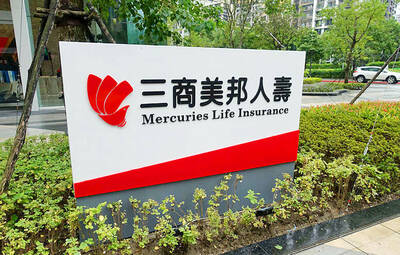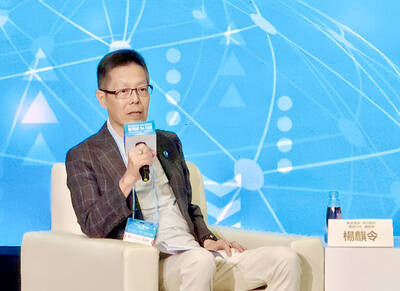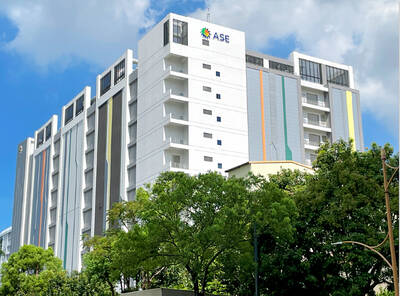South Korea’s gross national income (GNI) per capita last year fell behind Taiwan’s for the first time in 20 years due to the rapid depreciation of the won against the US dollar, the Bank of Korea said in a report yesterday.
South Korea’s GNI per capita dropped 7.7 percent to US$32,661 last year, compared with Taiwan’s GNI per capita of US$33,565, the report said.
Unlike GDP, which measures the value of production in a country, GNI refers to the value of GDP plus the net income earned by its nationals, whether domestically or abroad. GNI is used to gauge the average income of a country.

Photo: Bloomberg
The 13 percent depreciation of the won against the greenback last year led to a decline of 8.1 percent in South Korea’s US dollar-denominated GDP, causing the nation’s GNI to retreat from a year earlier, the Bank of Korea said.
However, if denominated in won, South Korea’s GDP rose 3.8 percent year-on-year last year, and its GNI per capita rose 4.3 percent annually to 42.2 million won, the central bank said.
TAIWAN’S PERFORMANCE
The New Taiwan dollar last year depreciated 6.8 percent against the US dollar — much less than the won’s decline.
Taiwan’s and South Korea’s GNI grew at a similar pace of about 4 percent last year in local currency terms, the central bank said.
In 2021, Taiwan’s GNI per capita was US$34,756, lower than South Korea’s US$35,373, the report said.
Taiwan’s NT dollar-denominated GNI per capita expanded 5.6 percent to NT$999,125 last year, similar to Taiwan’s GDP per capita, which increased 5.4 percent to NT$976,914, Directorate-General of Budget, Accounting and Statistics said.
The agency forecast that Taiwan’s GNI per capita would grow 2.1 percent this year to NT$1.02 million.

AI BOOST: Although Taiwan’s reliance on Chinese rare earth elements is limited, it could face indirect impacts from supply issues and price volatility, an economist said DBS Bank Ltd (星展銀行) has sharply raised its forecast for Taiwan’s economic growth this year to 5.6 percent, citing stronger-than-expected exports and investment linked to artificial intelligence (AI), as it said that the current momentum could peak soon. The acceleration of the global AI race has fueled a surge in Taiwan’s AI-related capital spending and exports of information and communications technology (ICT) products, which have been key drivers of growth this year. “We have revised our GDP forecast for Taiwan upward to 5.6 percent from 4 percent, an upgrade that mainly reflects stronger-than-expected AI-related exports and investment in the third

Mercuries Life Insurance Co (三商美邦人壽) shares surged to a seven-month high this week after local media reported that E.Sun Financial Holding Co (玉山金控) had outbid CTBC Financial Holding Co (中信金控) in the financially strained insurer’s ongoing sale process. Shares of the mid-sized life insurer climbed 5.8 percent this week to NT$6.72, extending a nearly 18 percent rally over the past month, as investors bet on the likelihood of an impending takeover. The final round of bidding closed on Thursday, marking a critical step in the 32-year-old insurer’s search for a buyer after years of struggling to meet capital adequacy requirements. Local media reports

TECHNOLOGICAL RIVALRY: The artificial intelligence chip competition among multiple players would likely intensify over the next two years, a Quanta official said Quanta Computer Inc (廣達), which makes servers and laptops on a contract basis, yesterday said its shipments of artificial intelligence (AI) servers powered by Nvidia Corp’s GB300 chips have increased steadily since last month, should surpass those of the GB200 models this quarter. The production of GB300 servers has gone much more smoothly than that of the GB200, with shipments projected to increase sharply next month, Quanta executive vice president Mike Yang (楊麒令) said on the sidelines of a technology forum in Taipei. While orders for GB200 servers gradually decrease, the production transition between the two server models has been

ASE Technology Holding Co (日月光投控), the world’s largest integrated circuit (IC) packaging and testing supplier, yesterday announced a strategic collaboration with Analog Devices Inc (ADI), coupled with the signing of a binding memorandum of understanding. Under the agreement, ASE intends to purchase 100 percent shares of Analog Devices Sdn Bhd and acquire its manufacturing facility in Penang, Malaysia, a press release showed. The ADI Penang facility is located in the prime industrial hub of Bayan Lepas, with an area of over 680,000 square feet, it said. In addition, the two sides intend to enter into a long-term supply agreement for ASE to